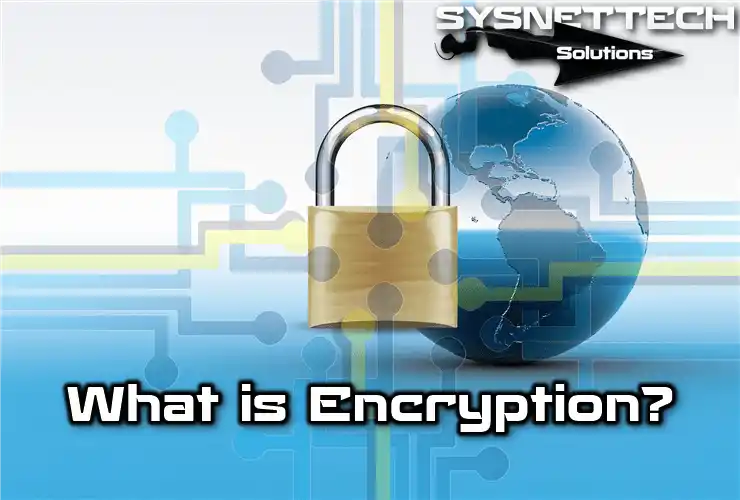Thanks to encryption, we keep our data safe and secure. But of course, we use some encryption algorithms while doing this.
In this article, we will dive into the definition of encryption, its features, and also its algorithms. Plus, we will explore its importance, functionality, and different types of encryption.

What is Encryption?
Encryption keeps passwords safe. It is like a secret code to protect information. Additionally, it stops unauthorized access. It means only the right people can see things.
Encryption is used when sending data between secure networks. These are like groups of private computers talking to each other. They also connect to the Internet. It’s like an ample space where all computers can share something.
The cryptography method ensures that credit card information remains safe. It is like a shield in the online shopping business. It also ensures that your data is secure while purchasing items online.
Keys are vital for encryption. They also create special codes for the purpose of locking or unlocking messages.
If someone hides the message, only they can reveal the message using the unique key. There are two basic types of code here. One is private, and the other is public. The algorithm is a unique calculation method that helps in doing all the work.
Generates a unique code for the message. The message is like a fingerprint. After that, the fingerprint is locked with the secret key. It’s like the magic key that unlocks the code.
What Does Data Encryption Do?
DES (Data Encryption Standard) is a unique encryption key code. It may be helpful for online shopping. Both parties have something special: a shared code. But buying anything online is not very safe.
RSA is the unique key code. It hides messages, but everyone has them. One is for everyone to see, and the other is a secret.
Data locked with a key can only be opened with its unique key. So, RSA uses two keys. One is like a lock; the other is like a key. They work together to create encryption codes. MD5 & RSA generate special vital codes.
The dominant purpose of the cryptography method is to protect data. It provides assurance when we send our information across networked PCs or online.
In addition to keeping things safe, data encryption is done to comply with the rules. Many companies consider it necessary to encrypt sensitive information so that no one who is not supposed to see it can access it.
What are Encryption Algorithms?
The encryption algorithm keeps our data safe while we are traveling. Therefore, it uses math and blocks to preserve information.
Encryption algorithms make it difficult for hackers to steal electronic money. Companies often use algorithms in software applications to address risks effectively.
It helps convert standard text into secret code or back again. This way, our information stays safe when we send it online. As a result, encrypting data protects it from hackers or unsafe persons.
Some encryption algorithms may be more complex than others. Yet, because many rely on mathematical rules, they need constant improvements as technology advances. Cryptography algorithms come in different lengths. Typically, a more extended algorithm is vital from a security perspective.
1. Symmetric Encryption
In the symmetric method, the sender uses the key to scramble the message.
Then, they must use the same information to decrypt it. It’s like a unique code that they both understand. These algorithms are fast and create secret codes using a large number of keys. But we can say that there is a problem.
Some examples of custom codes are Blowfish, IDEA & DES.
2. Asymmetric Encryption
The first part of the asymmetric encryption method is this: the sender hides the message using a public key that everyone knows. The receiver needs the key in the process of showing the key to understand the message. In this way, the data is kept confidential. Anyone can hide the message, but only the person with the unique key can read it.
The second working system is that the sender encrypts the message with a private key known only to them. All recipients decrypt the message with their private key. The logic here is not to hide information but to provide reality.
In the second method, anyone can quickly retrieve information, but they need to know where it comes from. Asymmetric is then used to check whether digital signatures are genuine.
Some examples of asymmetric algorithms include DSA, RSA & Diffie-Hellman.
3. Hybrid Encryption
Internet connections are like magic roads. They use one type of secret code and another type. This unites them.
Secure speech methods such as HTTPS use code to lock messages. So, it makes control simpler.
What Are the Commonly Used Types of Encryption Algorithms?
1. Triple-DES/3DES Algorithms
3DES is similar to the newer DES code. However, it is no longer used due to security issues.
DES is for keeping a non-top secret but essential data safe. Many companies with personal information used this.
Here’s how it works: it organizes data into blocks plus increases security with the key. It does this not piecemeal but in larger groups.
DES uses keys to lock or unlock messages. When you decrypt, you do the same steps in reverse order.
2. RSA Algorithms
The RSA method is different from DES. We are not using the same key in this one.
Since the algorithm generates a public & private key, the keys are the same. In conclusion, it is the same as the one used for decryption.
The method uses private & public keys to lock the message. It would be best if you had the opposite key to open the lock.
RSA makes sure everything is neat & correct. Long codes are challenging to understand because they contain large prime numbers.
Secure SSH protocol uses RSA to verify who you are. Plus, Web browsers use it to stay safe online.
3. AES Algorithms
The AES method is simple. That’s why users love it. It’s easy to use on devices and in limited spaces.
AES works well on computers because it is super resistant to attacks. It is also fast because it has good memory. As a result, many people use it everywhere due to its flexibility, ease of use, and low price.
The valid number of turns specification of the algorithm is 10 for 128-bit keys, 12 for 192-bit keys, and finally 14 for 256-bit keys.
AES encryption uses tables containing rows and columns to exchange data. It also decides how to change things in various departments.
4. RC4/5/6 Algorithms
In cryptography, the RC4 algorithm is the most widely used software for data traffic cryptography. That’s why they use it in protocols such as Secure Sockets Layer and WEP.
This encryption method is simple, practical & fast in software. However, it may be better on newer systems due to some weaknesses. Random or unconnected keys can cause problems, especially if the start of the Escape (ESC) key sequence needs to be done correctly.
It also generates a pseudo-random bit stream. This, like any stream cipher, uses special bits. However, by executing them in plaintext, the same steps are performed in decoding.
It has a secret inner key consisting of two parts. One is a 256-byte swap, and the other is a triplet of two 8-bit indexes. These work together to make a keychain.
First, a critical programming method initiates the swap process. The size of the key can be from 40 to 256 bits. Then, it generates a random bit stream.
5. Blowfish Algorithms
Like DES, Blowfish works the same way. Additionally, it uses the secret key to process the entire block of data.
Blocks are 64 bits in size, but the length of the key is between 32 and 448 bits. When the base changes, before that, it does something like operate on 4 KB of text.
Blowfish is unique – no one owns it, so it’s free to use. People love it because it is flexible, fast and safe. That’s why many people use it in their secret code programs.
6. Twofish Algorithms
It also works like Twofish & Blowfish but is the same on both sides. However, only one key works to lock and unlock.
Twofish splits the message into 128-bit chunks. It then uses the key simultaneously on all elements up to 256 bits in length.
Twofish is known for simple software or devices such as SIM cards. It’s fast, it’s adaptable, and you can use it without paying.
Advantages and Disadvantages of Encryption
After discussing what encryption and its algorithms are, let’s now examine its pros and cons:
- Symmetric encryption is high-speed. However, the Asymmetric type is much slower.
- Symmetry is more secure because sharing the key can cause problems. However, Asymmetric securely shares public keys with others.
- It is easier to manage keys when using asymmetric cryptography. Only one key pair per person locks messages for everyone else. However, with symmetric, the number of keys increases as more people participate.
How Does Password Authentication System Work in Encryption?
The first way to protect private data on the local network is to use a password. Therefore, creating different security methods with encryption helps ensure that the codes remain safe.
Additionally, in large companies, it is essential for security that employees update their passwords frequently. When they do this, they must mix complex words and numbers to create codes with patterns that are difficult to guess.
Authentication checks allow the person using the password to use the system. Thus, the server locks the user’s passwords using secret codes.
Then, compare the user’s encrypted password with the one in the table and verify whether the user can access the system. If the entered password does not match the system, it does not allow the user.
Simply put, it keeps usernames and passwords for network users on the server. Moreover, it encrypts the file based on the authentication technique.
How Does Username Verification Work in Encryption?
The user authentication system uses the PAP protocol to verify usernames. However, this does not give a password; It just locks the password list on the server.
Users who want to access a protected network resource send requests directly to the server using their username and password.
When the server has CHAP protocol and not PAP, the password list is not locked. So when someone logs in, the server gives them a random code to lock their password.
The user’s computer then uses this key to encrypt their passwords. It then sends the password back to the server. In this case, the server examines the table for random keys and encrypts the table with the key it sends to the user.
After this action, the server checks whether the locked password matches. This indicates whether the user can log in or not. As a result, the main goal of CHAP is to keep the server requesting the user’s computer throughout the entire session.
So CHAP solves the problem by sending different questions that the PC must lock and send back.
Therefore, the file must be protected from FTP access. In this case, only the administrator has permission to access the file.
Frequently Asked Questions (FAQ) About Encryption
- What is encryption, in simple words?
- What are the types of encryption?
- What is an example of encryption?
Conclusion
To summarize, encryption is an essential issue in the digital world. We want to protect our data on both a home and corporate network. We even prioritize security when accessing our remote structure from our local network. In such cases, we use cryptography to make the data maximum secure between our networks.
I also touched on the available encryption algorithms. These are, of course, symmetrical, asymmetrical, and hybrid types. We can also use one or more of such methods. In this way, we can prevent unauthorized access or cyber threats.



